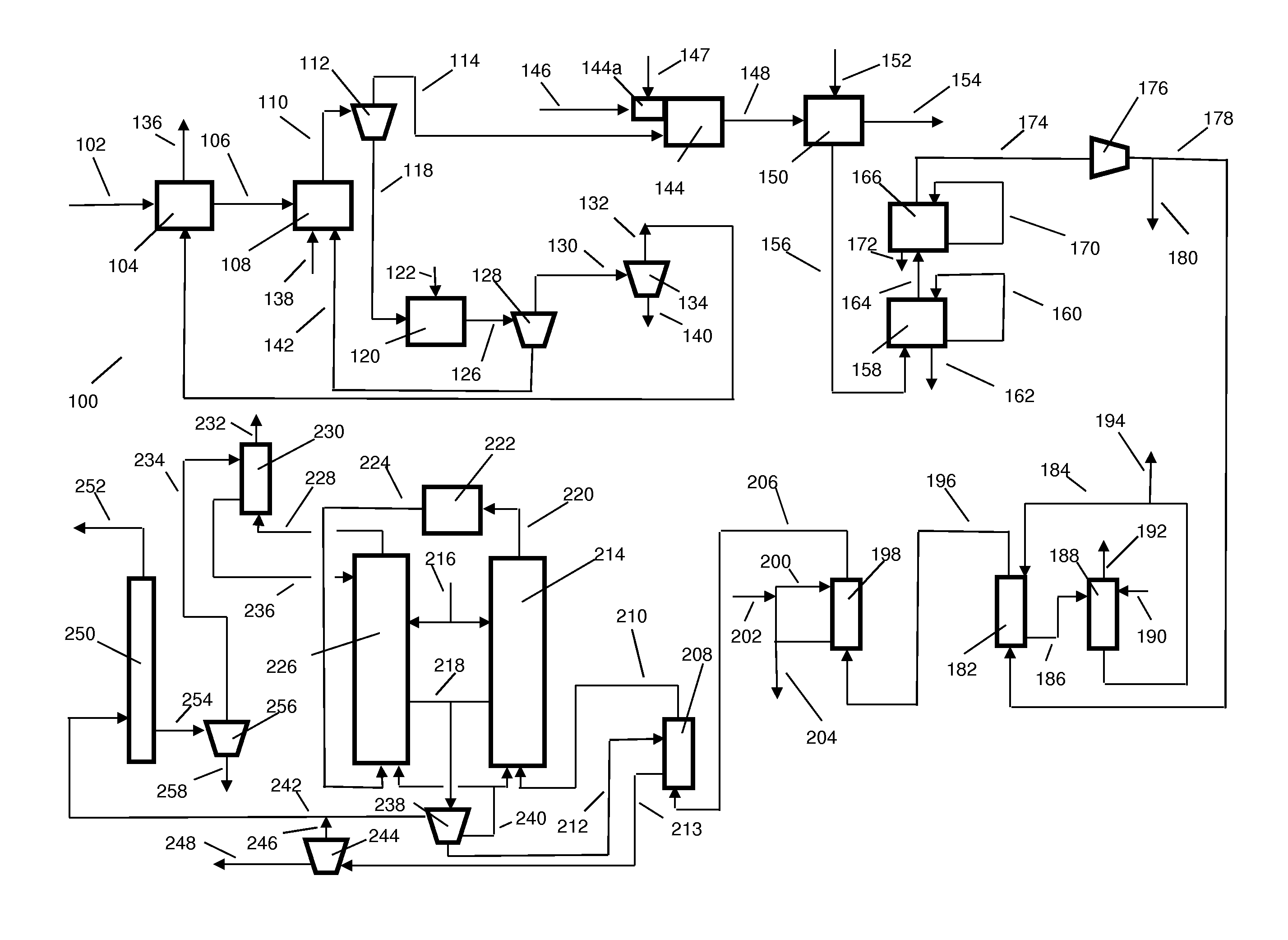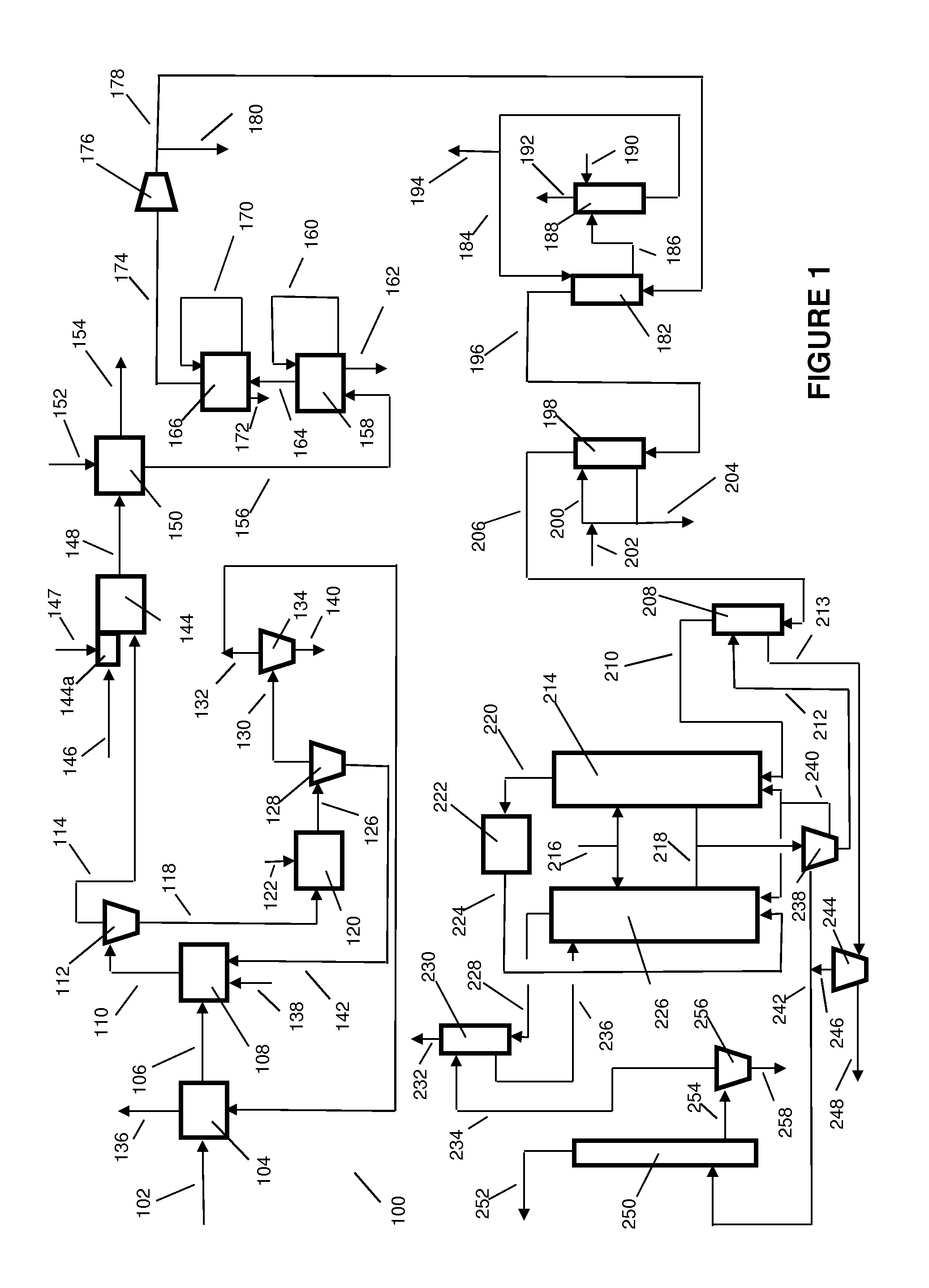Processes for the conversion of biomass to oxygenated organic compound, apparatus therefor and compositions produced thereby
a technology of oxygenated organic compound and biomass, which is applied in the field of biomass conversion to oxygenated organic compound, apparatus therefor and compositions produced thereby, can solve the problems adversely affecting fermentation, and achieves the effects of reducing the concentration of other components, saving production costs, and ensuring fermentation operation
- Summary
- Abstract
- Description
- Claims
- Application Information
AI Technical Summary
Benefits of technology
Problems solved by technology
Method used
Image
Examples
Embodiment Construction
Definitions
[0047]The term Component Composition means the composition of a gas where both water and nitrogen have been excluded from the calculation of the concentration of the components. As used herein, unless otherwise stated, compositions of gases are on an anhydrous basis and exclude the presence of nitrogen.
[0048]Oxygenated organic compound means one or more organic compounds containing two to six carbon atoms selected from the group of aliphatic carboxylic acids and salts, alkanols and alkoxide salts, and aldehydes. Often oxygenated organic compound is a mixture of organic compounds produced by the microorganisms contained in the aqueous menstruum.
[0049]Aqueous menstruum means a liquid water phase which may contain dissolved compounds including, but not limited to hydrogen, carbon monoxide, and carbon dioxide.
[0050]Biomass means biological material living or recently living plants and animals and contains at least hydrogen, oxygen and carbon. Biomass typically also contains n...
PUM
| Property | Measurement | Unit |
|---|---|---|
| temperature | aaaaa | aaaaa |
| temperature | aaaaa | aaaaa |
| temperature | aaaaa | aaaaa |
Abstract
Description
Claims
Application Information
 Login to View More
Login to View More - R&D
- Intellectual Property
- Life Sciences
- Materials
- Tech Scout
- Unparalleled Data Quality
- Higher Quality Content
- 60% Fewer Hallucinations
Browse by: Latest US Patents, China's latest patents, Technical Efficacy Thesaurus, Application Domain, Technology Topic, Popular Technical Reports.
© 2025 PatSnap. All rights reserved.Legal|Privacy policy|Modern Slavery Act Transparency Statement|Sitemap|About US| Contact US: help@patsnap.com


